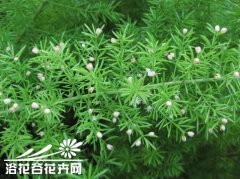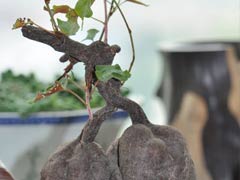The cultivation method of Daqingye Isatis indica
Isatis indigotica, also known as Daqingye, Dalan, Daqing, Daqing, is a biennial herb and an important material for ancient dyes. It is mainly used for dyes or medicinal purposes. The root used as medicine is called Isatis root, and the leaves used as medicine are called Daqingye.Fresh leaves are also the raw material for making Qingdai. It is native to China. It is mainly produced in Anguo, Hebei Province, Rugao and Nantong in Jiangsu Province.
Daqingye Isatis indica plant height is 40-100cm. The main root is deep and long, 1-2.5cm in diameter, 20-50cm in length, and light yellow-brown outer skin. The stem is erect, the upper part is branched, and the upper part is slightly pink. The leaves are alternate, the baseLarge leaves, oblong leaves, light pink gray, smooth and glabrous; stem leaves are oblong or oblong-lanceolate, with racemes, yellow flowers. Siliques are flat oval, marginal, purple. Flowering periodApril to May, fruit period is June.
Daqingye Isatis indica is highly adaptable, resistant to cold, loves warmth and fears waterlogging. When the temperature is right, the leaves grow fat. It grows in loose, fertile, well-drained sandy loam, and the roots are straight and smooth.
Daqingye Isatis indica with seedsReproduction, apply sufficient base fertilizer before sowing, deep plow and fine rake the ground for border preparation. Sow from late March to early April, and summer sowing no later than June. Use the drill sowing method, open the trench at 20-25cm, and the trench depth is 1.5-2cm. Soak the seeds in water, drain them, accompany them into fine soil, and evenly spread them into the ditch, cover 0.5-1cm of soil, slightly suppressed. The sowing rate per hectare is 22-30kg. When the plant height is 4-7cm, the seedlings will be fixed according to the spacing of 6-7cm., Weeding and loosening the soil at the same time, watering and top dressing are performed according to the growth of the plants after setting the seedlings.
Pests and diseasesThere are downy mildew disease Peroncspora parasitica, white rust disease Albugo candida, sclerotinia sclerotiorum; cabbage white butterfly Pieris rapae, diamondback moth Plutella maculipennis and aphids.
- Related knowledge
- The breeding method of Huaye Biantianzhang
- How to cut dahlias
- The breeding method of cross star brocade
- Knowledge and treatment method of flower slow seedling period
- Flower top dressing method and precautions general
- The topping method of millions of small bells graphic
- The breeding method of Northern Rieger Begonia
- Three ways to make longevity flowers bloom more
- Methods of controlling scale insects
- The breeding method of Zhu Dinghong excellent summary
- The breeding method of Blue Star Beauty
 Is the single tree poisonous tell the truth
Is the single tree poisonous tell the truth- Common pests and diseases of safflower Safflower
- The breeding method of Zhimu
- Medicinal value of Platycodon grandiflorum
 Why the stems and leaves of Asparagus are easy to turn yellow
Why the stems and leaves of Asparagus are easy to turn yellow- Difference between Lonicera and Honeysuckle|Leaves and dried flowers
 Multiple cultivation methods
Multiple cultivation methods- The cultivation method of Daqingye Isatis indica
- Editor's recommendation
- How to pot honeysuckle
- The cultivation method of Daqingye Isatis indica
- Cultivation points of Chlorophytum
- Why the stems and leaves of Asparagus are easy to turn yellow
- Lythrum serrata Phalaceae, Pterocephalus, Iron water chestnut
- Planting technology of Pueraria lobata
- Medicinal value of Platycodon grandiflorum
- Cultivation technology of grass coral
- Plantain
- Artificial cultivation of Polygonum multiflorum

